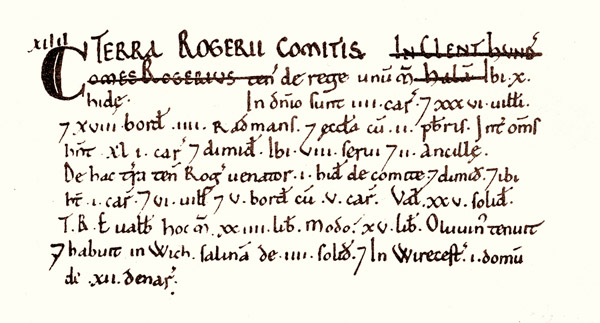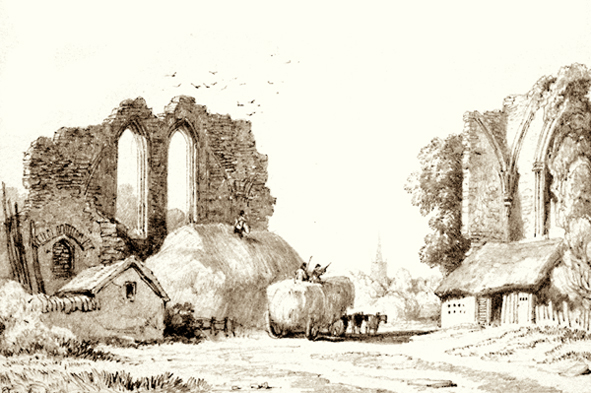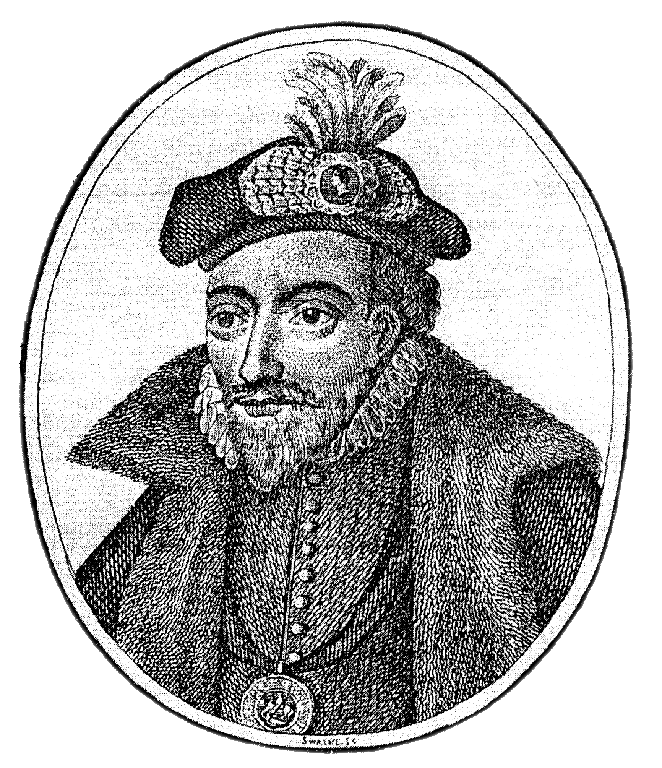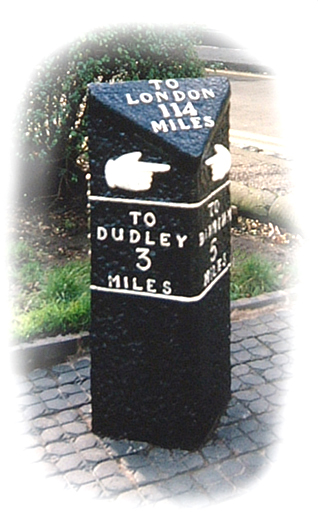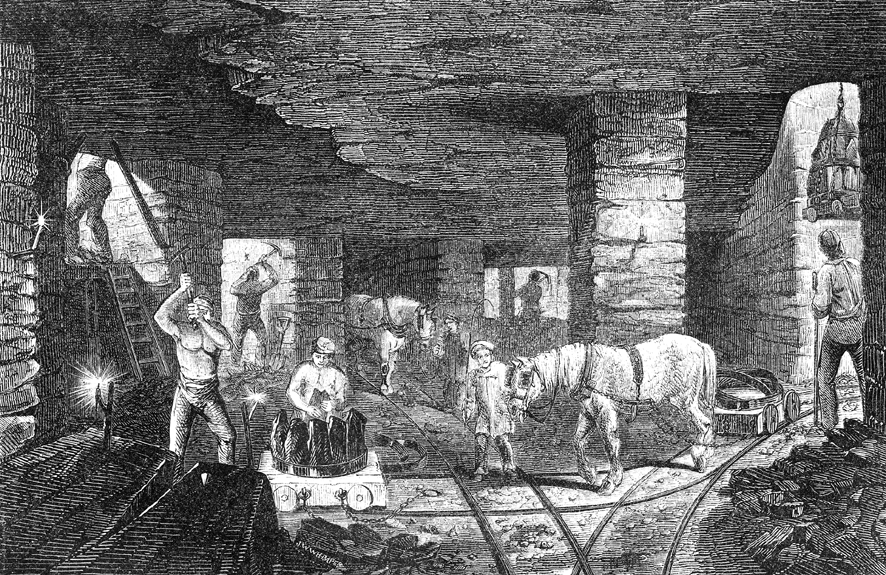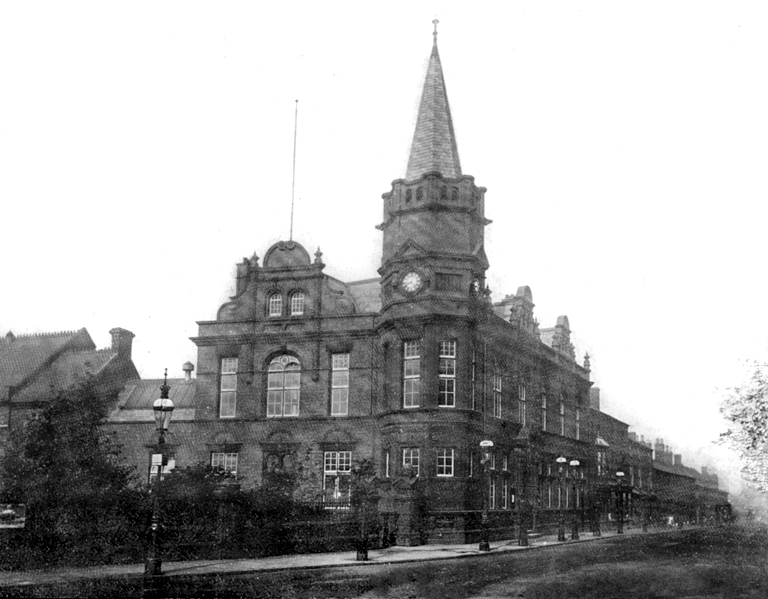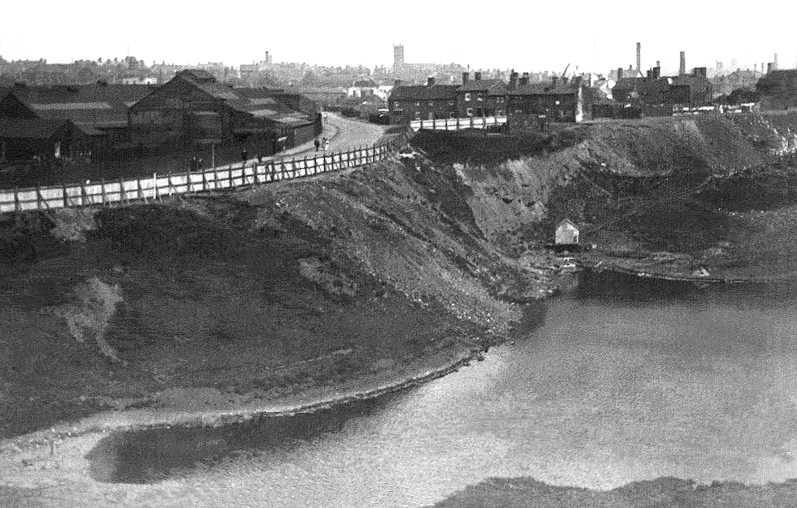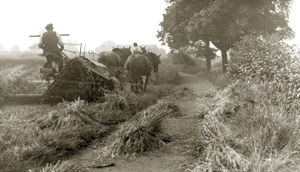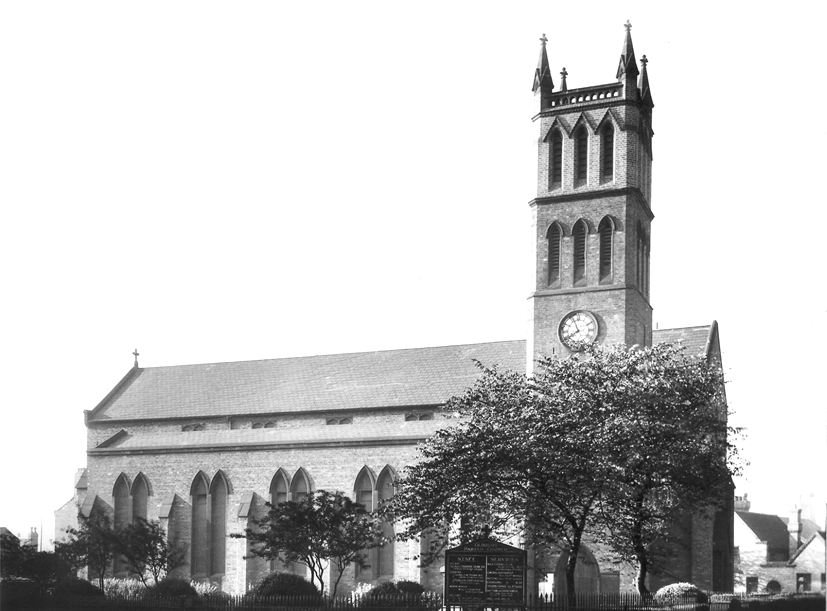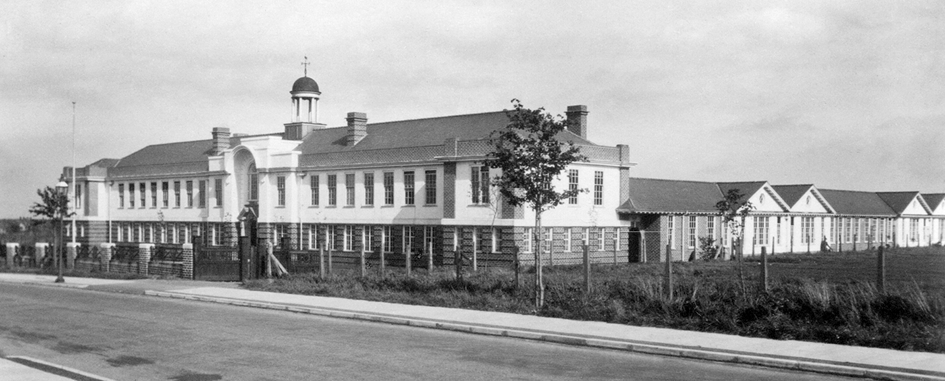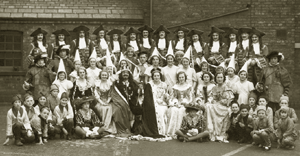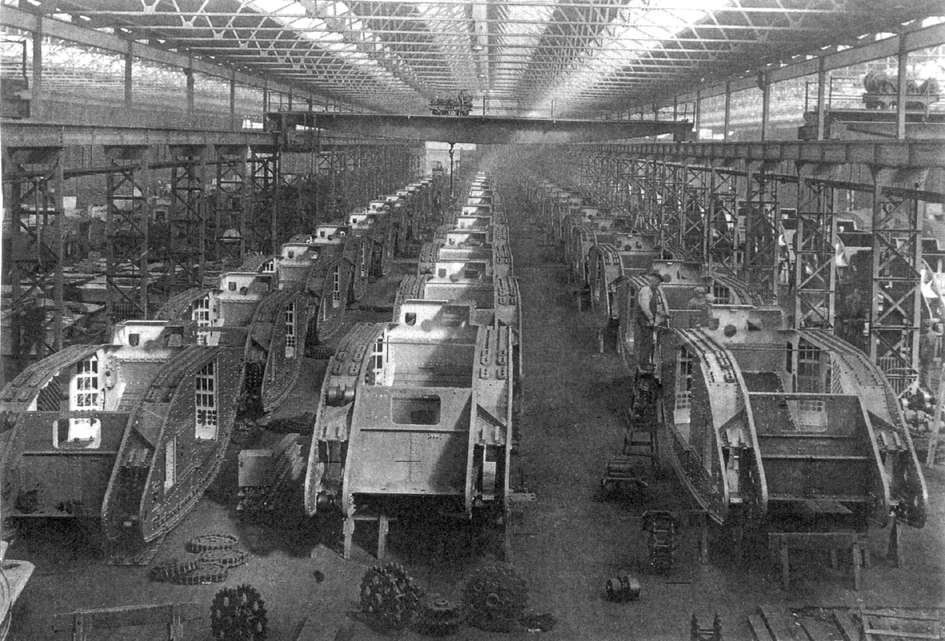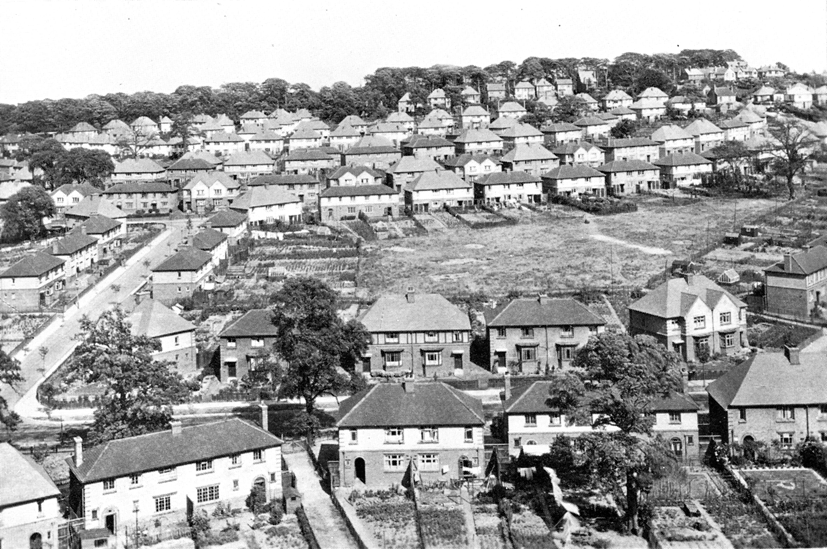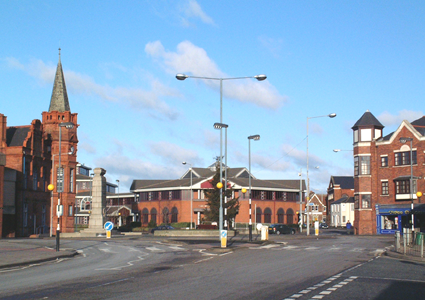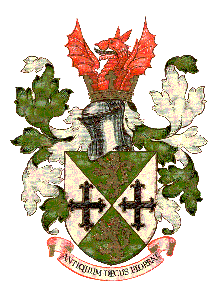
|
History
of Oldbury, Langley and Warley
|
||
|
Communities
of the West Midlands
|
||
|
The
website of Langley Local History Society - Oldbury Local History
Group - Old Warley Local History Society
|
||
 |
||
| HOME | |
| NEWS & EVENTS | |
| OLDBURY HISTORY | |
| ----The story of Oldbury | |
| ----Timeline | |
| ----Articles | |
| ----Index | |
| HISTORY SOCIETIES | |
| PUBLICATIONS | |
| GALLERY | |
| QUESTIONS | |
| LINKS | |
| CONTACT US |
|
THE STORY OF OLDBURY 1000 years in a nutshell |
Hales Manor remained in the hands of Earl Roger's descendants until 1102, when Robert de Belesme led an unsuccessful rising against Henry I, and the manor was confiscated by the crown. In 1177, Henry II gave it to his brother-in-law, David ap Owen, Prince of Wales, and it became 'Hales Owen'. It reverted to the crown on his death, and ten years later King John granted it to the Bishop of Worcester to found a religious house.
The first 'White Friars', or Presmonstratensian Canons, arrived on 6th May 1216, and Oldbury, like the rest of Hales Owen manor, came under monastic rule. Hales Owen Abbey was not a large establishment, but the relationship between the Abbot and the people of the manor was often strained. The 'manor rolls' provide an insight to life in the thirteenth and fourteenth centuries. Various watermills and chapels in Oldbury are mentioned, and also the five open fields that surrounded Oldbury. During the Black Death of the 1340s the population of the manor was reduced by about a third. The parish church was St John's, Halesowen, and it remained such until the 1840s, when the parish of Oldbury-cum-Langley was created. Because of the distance from Oldbury to the church, the people of Oldbury built a small chapel in 1529.
By 1538 Henry VIII was suppressing and destroying monasteries throughout the country, and the Abbot of Hales surrendered the Abbey to the King. The Manor of Hales was given to Sir John Dudley, later the Earl of Warwick and Lord Northumberland. In 1553 he tried to install Lady Jane Grey as Queen, but the plot failed and he was executed. The manor was confiscated, but released to his widow. Two years later his son, Sir Robert Dudley, sold most of the manor and, soon after, it came into the Lyttleton family. However, Sir Robert retained "… such parte, parcelles and members of the premysses as be and do lye in Oldbury and Walloxhall alias Langley Walloxhall …". Thus, the separate Manor of 'Oldbury Walloxhall, alias Langley Walloxhall alias Langley and Walloxhall' came into being. The Manor of Oldbury passed through several families as Lords of the Manor, including Cornwallis, Featherstone, Grimshaw, Wright, Parrott and Allen-Frazer. The lands were gradually sold off, and the Manor Court ceased to operate in the early twentieth century. Oldbury was a small country town occupied by smallholders and nailers in the seventeenth century.
The road through Oldbury was turnpiked around 1760, and the first canals came through the town twenty years later. Oldbury was well placed to develop its mineral wealth with access to the markets of Birmingham and the Black Country. Industrial expansion was rapid an advances in technology made it possible to mine the thirty-foot seam under the area. Coal mining and iron working became the main industries in the first half of the nineteenth century with collieries, forges and foundries arising around Oldbury and Langley. The town had four blast furnaces, operating from the 1780s to the 1860s.
The opportunities for work drew many people into the area, and the population rose rapidly. As the demand for housing increased, many inferior houses were erected, soon to be slums. Oldbury was slow to provide good sanitation and water for its inhabitants, but slowly improvements were made in the second half of the nineteenth century. With the advent of the Highways Board in 1836, the Board of Health in 1857 and the Urban District Council in 1894, the local government of the area developed. Public Offices were built in the Market Square, and gas works and a sewerage works constructed as town amenities.
Industry continued to develop, with chemical manufacture starting in 1837 to supply the glass works at Smethwick, followed by phosphorus extraction in 1850, tar distillation and plastics. As coal mining and iron extraction declined, brick making spread, exploiting the layer of Etruria marl below Oldbury. Iron and steel manufacture expanded with edge tools, railway carriages, boilers and tubes being sent around the world. This industrial expansion destroyed much of the green countryside that surrounded Oldbury in 1800, leaving spoil heaps, marl holes, quarries, pits and pollution throughout the area, and a legacy of reclaiming the land throughout the twentieth century. What was not destroyed was built over, and now little green space remains, save the parks and open spaces bequeathed by industrialist benefactors.
Warley had been following a different path. It remained part of Halesowen Manor when Oldbury separated in the 1550s, and become part of Quinton Parish in the 1840s. It joined with Oldbury and Langley again when Oldbury Urban District was formed in 1894. Warley did not experience the industrial development of Oldbury and Langley, not being situated on the coalfield and being away from the canal system. It remained rural farmland until given over to housing between the wars, and, in the Brandhall area, from the 1950s. Part of Warley was transferred to Smethwick in 1928. The increase in population of the early nineteenth century saw the growth in churches and schools. The Church of England was weak in the town until the creation of Oldbury and Langley parishes in the 1840s. The parish church, Christchurch, was opened in 1841, and Trinity Church, Langley followed in 1852.
The first Roman Catholic church since the 1530s was opened in 1865, St Francis Xavier. Oldbury had always had a strong protestant tradition, and it was the non-conformist chapels of the Methodists, Baptists, Independents and Unitarians that flourished in the mid-1850s. Most of the schools of the Victorian era were started by the churches, and Oldbury had sufficient places for pupils not to need a School Board when these were introduced in the 1880s. The same was not true of Warley where a Board School was opened in 1881. The first council schools were built at Rood End, Abbey Road, Rounds Green and Titford Road between 1906 and 1911 for infants and juniors, and all are still operating a century later. The need to train industrial workers led to the opening of a Technical School in 1899 providing evening classes. A day secondary school was opened in the premises during the day soon afterwards. The secondary school was transferred to new premises in Moat Road in 1926, becoming the County High School, and after WW2, Oldbury Grammar School. Comprehensive education was established throughout the borough in 1974.
Oldbury became part of the West Bromwich Union under the poor law changes of 1837, and was represented on the Board of Guardians of West Bromwich Workhouse. When the workhouse closed in the 1930s, it became Hallam Hospital. Oldbury looked to West Bromwich for most of its hospital facilities, and was part of the 'district' covered by the West Bromwich and District Hospital from the 1860s. Many fund-raising events were held to support the 'District' Hospital, including collections and Carnival weeks throughout the 1930s.
Oldbury was very heavily involved in production of armaments in both world wars. Most of the tanks used in WW1 were made at the Oldbury Carriage Works. Albright and Wilson manufactured phosphorus bombs, Chance Brothers' Alkali Works produced TNT in a new Government factory erected for the purpose. Between the wars, the Urban District Council set about changing the social conditions in the area, with the expansion of education and welfare, and large schemes of council housing and slum clearance. Clinics, libraries and swimming baths were built in the 1930's. In addition to these advances by the local authority, there was a heavy involvement of local people in welfare efforts, through organisations such as the Citizens' Society, and through fund-raising to support the local hospitals.
The Urban District Council was granted a coat of arms in 1926. It pressed for borough status, and it was granted a charter in 1935.
As the Borough of Oldbury, it continued to grow with new industries including the manufacture of bottle, pens, sweets and cookers. After 1945 the expansion continued with further house building and the arrival of the M5 motorway in 1964. This decade saw the decline of the canals, a major factor in Oldbury's prosperity. In 1964 Oldbury was joined with Smethwick and Rowley Regis to become the County Borough of Warley. Oldbury's independence had ended. It was further subsumed by the creation of the Metropolitan Borough of Sandwell in 1974 from Warley and West Bromwich County Boroughs. During the 1970s and 80s, Oldbury town centre went into decline, and Oldbury's heavy industries were lost. The town was 'rescued' by the arrival of the 'Savacentre' shopping outlet, but its creation involved extensive redevelopment of the old streets, houses, workshops and chapels in the area. More change came with the demolition of Freeth Street area and the opening of the Sandwell Council House. The whole face of Oldbury has changed: many old buildings were destroyed, often without an adequate record of them, and the old street pattern of Oldbury obliterated. The process continues as more buildings are demolished and replaced. The challenge for Sandwell is to preserve the old whilst it develops for the future.
Much of Oldbury's history has been lost on the ground, and its preservation through memory, document and image is the aim of the local history societies set up through the local libraries in the 1990s. |
